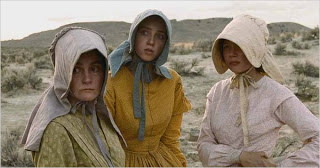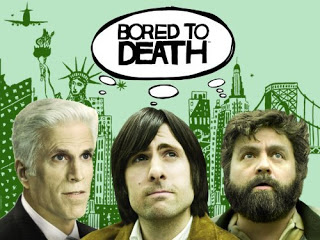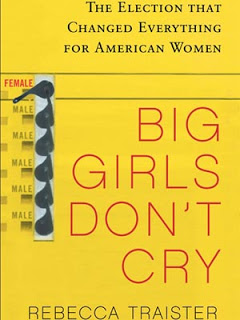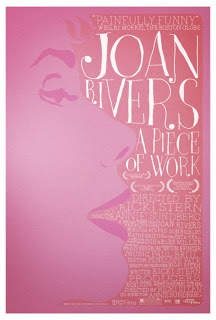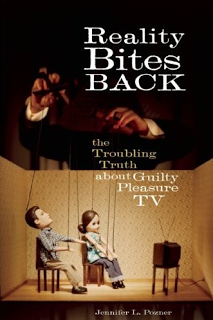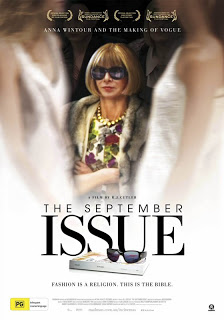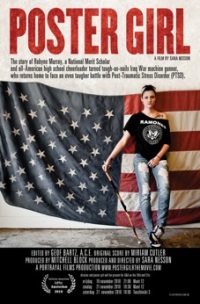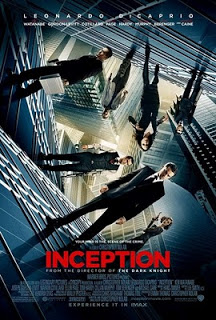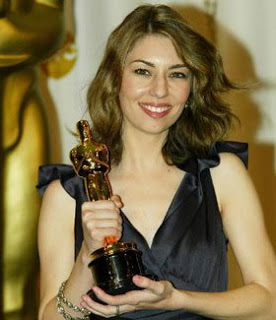Fashion is a bit of an anomaly in capitalist enterprise, in that its major players are primarily women and gay men. Anna Wintour, editor-in-chief of Vogue, is the “single most important figure in the 300 billion dollar global fashion industry.” The September Issue chronicles the assembly of the massive 2007 fall fashion issue of the magazine.
Before getting into any specifics about the film, I want to say a thing or two about fashion, because it’s a subject–and an industry–about which I feel a great deal of ambivalence. Last March, when Stephanie and I reviewed
Sex and the City: The Movie for this website, I struggled to pinpoint my perspective on fashion, and left it at this:
I like fashion. It’s an art form, and its creators are capable of beautiful design and cultural statements. It’s also an industry, and like all major industries, has a very ugly side. I liken it to professional sports: I watch from the sidelines, aware of the way I’m being manipulated, but enjoy it nonetheless—all without expressly participating.
I don’t think my perspective today is as sunny, nor would I necessarily choose the same sports metaphor. Yes, fashion is an art form, and designers truly do create magnificent works of art. Its “ugly side” isn’t so easy to overlook, though–particularly the endless number of rail-thin, anorexic-looking models reinforcing society’s ideal body type, which is unachievable for a vast majority of women. Fashion magazines not only perpetuate the idealization of the stick-skinny model, but also tell women, in page after page, that they aren’t good enough, and that they need to spend massive amounts of time, energy, and money on looking (read: being) better.
Here’s the thing, though: Despite my problems with the industry on display, I really like The September Issue, for a number of reasons.
Sitting down to watch TSI, I expected the film to explore the glamorous life of Anna Wintour. At least I expected that to be a major element of the film, but viewers actually learn very little about her–there isn’t a lot of insight into her life or her motivations, aside from what appears in the film’s trailer (which appears at the bottom of this post). Perhaps it was foolish to believe that this notoriously private woman would reveal herself in a documentary focused on her magazine, but we do get a few poignant moments of insight amidst all the meetings, photo shoots, disagreements, and jet setting.
Anna Wintour has Power. She jokes that her siblings find what she does for a living “peculiar,” because maybe editing a fashion magazine doesn’t affect world politics, or cure diseases, or save the world. But high fashion is art, and art is peculiar. Amid the ads for cosmetics (which probably contain ingredients that no one should be putting on her or his skin) and accessories few of us can afford, there are stunning photographs of beautiful clothes. Most of the clothes aren’t really meant to be worn in Real Life, but they are pieces of art, and the people who make this wearable art fall all over themselves hoping that Wintour will notice them. They cater to her every whim, her every pointed critique.
Perhaps Wintour finds her position a bit peculiar, as well. There’s a drive viewers can see in her, and it seems as if she’s blindly plowing ahead, following success after success with little reflection about the why of it all. Her daughter appears to have no interest in the fashion industry, even though there’s a simple, ready-made path for her there. Like her mother, she doesn’t elaborate on her opinions, but knows that the industry isn’t for her. Wintour herself doesn’t really have much to say about what she’s achieved; she’s not the type to wax philosophically. Instead she states–and shows viewers–very plainly that she works hard and that the magazine has earned her a lot of money.
Fortunately, the movie also features Wintour’s team at Vogue, one of whom emerges to become the real star of The September Issue.
Grace Coddington is a former model and the creative director at
Vogue. She even started working there on the same day as Wintour. She is intelligent, reflective, and an artist to Wintour’s manager persona. Coddington isn’t afraid to stand up to Wintour (whose lack of empathy was famously fictionalized by Meryl Streep in 2006’s
The Devil Wears Prada) either, and flawlessly uses her every resource, including the documentary film crew, to her advantage. Viewers may see her as being cutthroat, but she’s an artist fighting for her vision, her work, and she’s earned it. She’s 68 and has spent her whole life in this industry, working for British
Vogue and Calvin Klein before joining Wintour.
Gawker points to one of my favorite moments in the film, in their piece
“How Grace Coddington Stole The September Issue from Anna Wintour”:
Eventually, Coddington gets so palsy-walsy that she puts one of the September Issue cameramen into a last-minute photo shoot as a prop. The resulting pictures are fresh and fun and even manage to make Anna smile, although it’s not clear if she likes the pics or is just enjoying telling a middle-aged cameraman that he’s too fat. When Coddington hears that Wintour wants to Photoshop out his belly, she gets on the phone and threatens the art director and tells him that he has to leave it alone. “Not everything can be perfect in the world,” she rails. It is the climax of the movie, where Coddington eventually triumphs over the tyrant, who has been chipping away at her artistic integrity for the entire 90 minutes.
Of course,
Gawker can’t help but pit these two women against each other–using words like “stole,” “palsy-walsy” (whatever that means, it doesn’t sound like a compliment), “rails,” and “tyrant” to pigeonhole their working relationship as a catty, woman-against-woman, oh-so-typical drama. While I love that Coddington fights to keep the photo of the cameraman un-retouched, I do wish that a woman with a belly could appear in the pages of
Vogue. The moment, however, is a stroke of genius. The issue of the magazine had certainly been affected by the film crew being there, and Coddington found a way to literally put them into it.
While Coddington expresses enormous respect for Wintour, she isn’t afraid to speak her mind. Pontificating on the magazine in the back of a car, she mentions how little she likes the rise of celebrity culture and the practice of using actresses as cover models (the fall fashion issue features Sienna Miller on the cover), but concedes that Wintour knew this was the future of fashion mags and put the idea into action first.
At times we get the feeling that Coddington doesn’t really know how or why she got to this point in her career, but she’s very good at her job. Throughout the film we see exquisitely detailed photo shoots where she seems to be in her element and having a genuinely good time. The squabbles with Wintour over keeping her work in the issue upset Coddington, however, and make her nearly question the whole enterprise. Somehow, I get the feeling that if she walked out the
Vogue office doors and never came back, she’d be just fine. Wintour never lets viewers in enough for us to even speculate, maintaining her ice queen reputation and doing so with less humor than her fictional counterpart.
Yes, there is drama in the film, and some of it even seems like stereotypical fashion magazine fare, but what remains remarkable is seeing two talented women in their sixties running a fashion empire, working together, clashing over their visions for the issue, all while expressing enormous respect for one another, and doing it all with intelligence and glamour.

